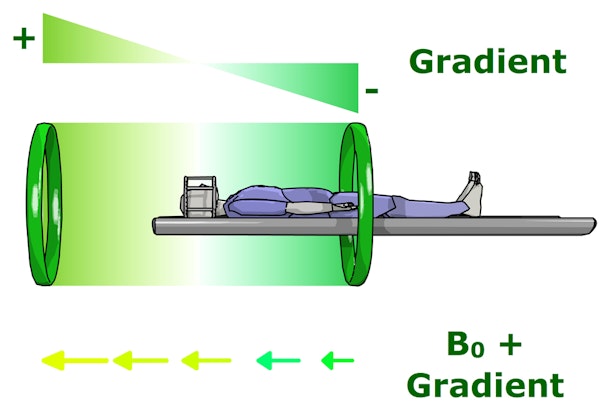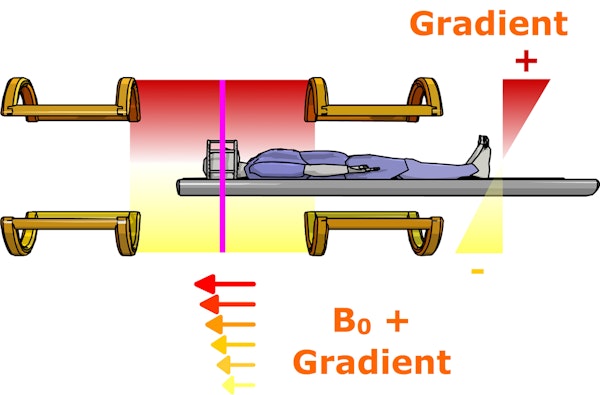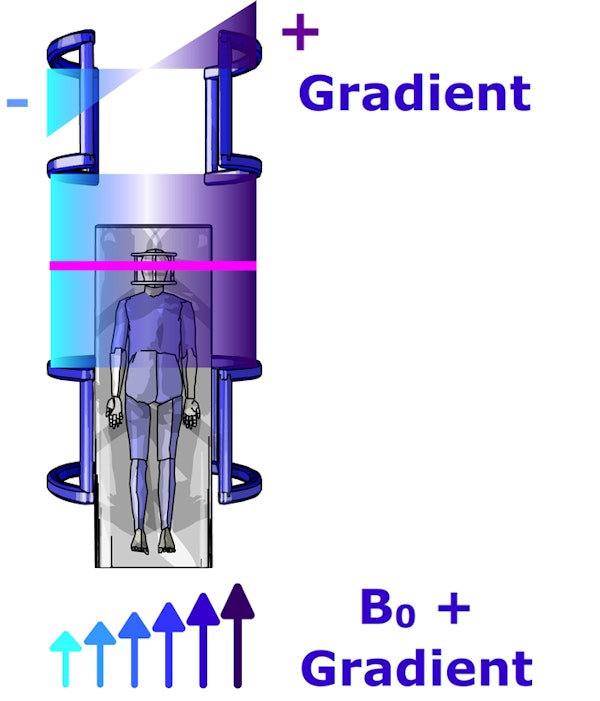Magnetic field gradients
Spatial encoding relies on successively applying magnetic field gradients.
First of all, a slice selection gradient (GSS) is used to select the anatomical volume of interest. Within this volume, the position of each point will be encoded vertically and horizontally by applying a phase encoding gradient (GPE), and a frequency-encoding gradient (GFE).
The different gradients used to perform spatial localization have identical properties but are applied at distinct moments and in different directions. Gradient equivalence in the three directions of space means that slices can be selected on any spatial plane. We’ll use the example of an axial plane to explain spatial encoding.
The gradient is symbolized by two triangles joined at the apex. This indicates that the gradient is bipolar with a positive component (added to B0) and a negative component (subtracted from B0).

Representation of a slice plane and the directions of the gradients in our example : slice selection

phase encoding

frequency encoding
The following diagram summarizes an MRI sequence of the Spin Echo type, which will serve as a protoype to explain slice selection gradients, phase encoding and frequency encoding.
